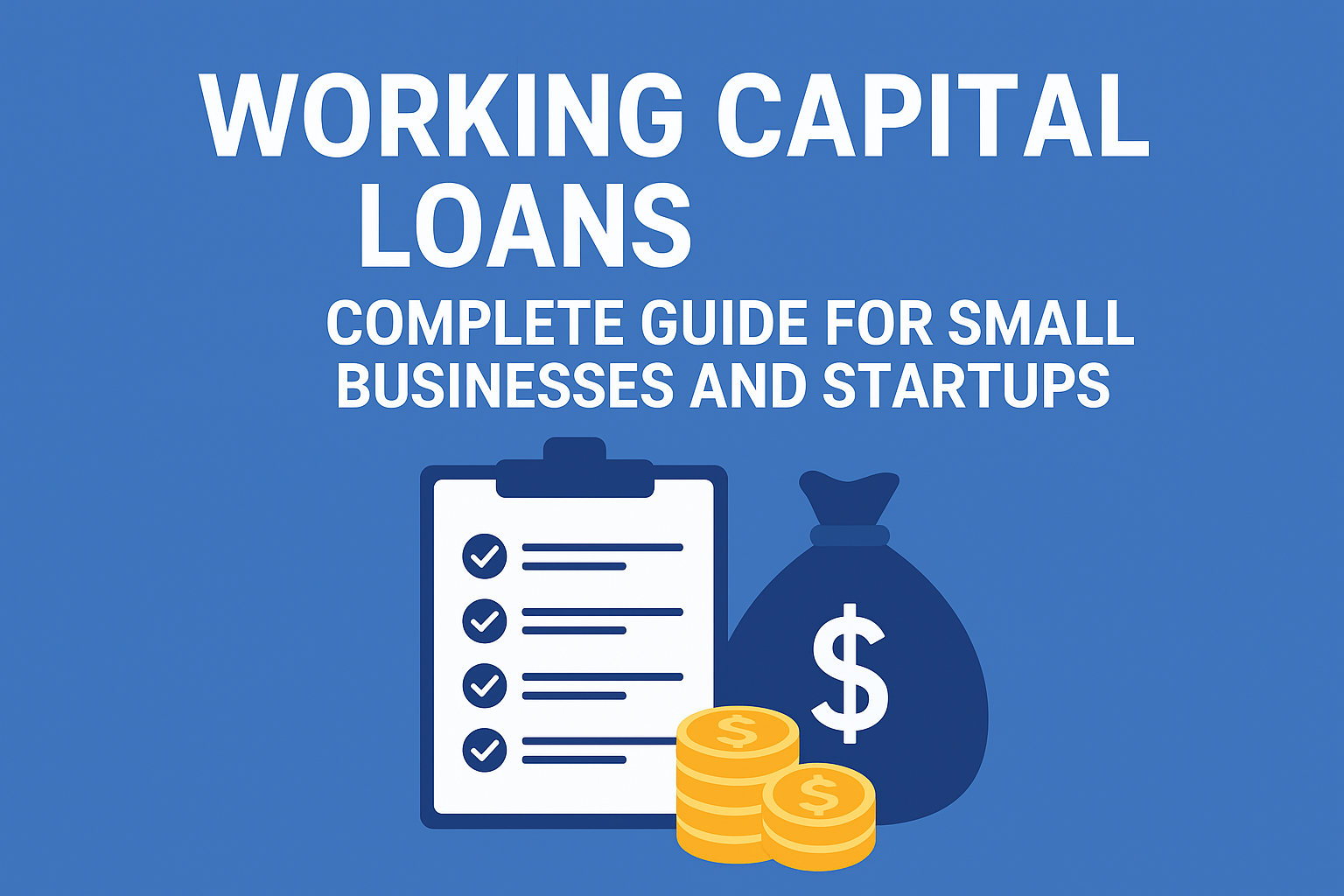Working Capital Loans for Small Businesses and Startups in the USA
Running a small business in the U.S. often means juggling cash flow—especially when expenses arrive before revenue. Whether you’re covering payroll during a slow month or purchasing inventory for the busy season, working capital loans can keep your business moving forward. These short-term funding options are designed to cover day-to-day operations, not long-term investments, making them an essential lifeline for small businesses and startups.
Table of Contents
- What Are Working Capital Loans?
- Why U.S. Small Businesses Need Working Capital Loans
- Types of Working Capital Loans
- Benefits of Working Capital Loans
- Working Capital Loan Calculator
- How to Apply for a Working Capital Loan
- Top Working Capital Loan Providers in the USA
- Frequently Asked Questions
What Are Working Capital Loans?
A working capital loan is a short-term financing solution that helps businesses cover their daily expenses such as payroll, rent, utilities, or marketing. It bridges the gap between payables and receivables, keeping your operations running smoothly even when cash flow dips.
According to a Federal Reserve Small Business Credit Survey, nearly 60% of small firms in the U.S. sought some form of financing to manage cash flow—not just expansion. This highlights the growing role of working capital loans in sustaining American entrepreneurship.
Why U.S. Small Businesses Need Working Capital Loans
Even profitable businesses encounter short-term liquidity issues. Imagine a retail shop waiting on supplier payments or a tech startup waiting for investor funds—both still need to cover operational costs. That’s where a working capital loan comes in.
- Seasonal support: Manage slow months and prepare for peak seasons.
- Stabilize operations: Maintain consistency when revenue is delayed.
- Take advantage of opportunities: Buy stock or invest in marketing without waiting for incoming cash.
- Preserve business relationships: Make timely payments to employees and vendors.
Types of Working Capital Loans
There’s no one-size-fits-all financing option. Here are the most common working capital loans available in the U.S. and their advantages:
| Type | Description | Collateral | Best For |
|---|---|---|---|
| Business Line of Credit | Access funds up to a limit and pay interest only on what you use. | Not required | Flexible ongoing needs |
| Short-Term Business Loan | Lump-sum loan repaid over a few months to a year. | May vary | Specific one-time expenses |
| Invoice Financing | Borrow against unpaid invoices from clients. | Invoices as collateral | B2B companies with delayed payments |
| Merchant Cash Advance | Receive a lump sum repaid via future sales percentages. | Not required | Retail and eCommerce businesses |
| SBA 7(a) Loan | Government-backed funding with lower rates and longer terms. | Sometimes | Established small businesses |
Learn more about SBA financing options on the official U.S. Small Business Administration website.
Benefits of Working Capital Loans
Working capital loans can transform how small businesses handle short-term challenges. Here’s why many U.S. entrepreneurs rely on them:
- Quick access to cash: Some lenders fund within 24 hours of approval.
- Protect ownership: Unlike investors, loans don’t dilute your equity.
- Build credit: Regular repayment improves business credit scores.
- Flexible repayment options: Choose from daily, weekly, or monthly plans.
- Unsecured options: Many fintech lenders don’t require collateral.
Working Capital Loan Calculator
How to Apply for a Working Capital Loan
Here’s a simplified process to help you apply for a working capital loan successfully:
- Evaluate your funding needs: Don’t overborrow; estimate exact operational costs.
- Check your credit profile: A FICO score above 600 helps secure better terms. Learn more about business credit at Experian Business.
- Compare lenders: Explore multiple offers before deciding. Sites like NerdWallet and Forbes Advisor list reliable comparisons.
- Prepare documents: Typically include bank statements, tax returns, and business plans.
- Apply online: Most U.S. lenders have digital portals for instant application and approval.
Top Working Capital Loan Providers in the USA
Here’s a look at the leading U.S. lenders offering competitive working capital loan options:
| Lender | APR Range | Loan Amount | Repayment Term | Highlights |
|---|---|---|---|---|
| BlueVine | 6.2% – 25% | $5,000 – $250,000 | 6–12 months | Flexible lines of credit with quick approvals |
| OnDeck | 9% – 24% | $5,000 – $250,000 | Up to 24 months | Fast funding with transparent terms |
| Fundbox | 10% – 25% | $1,000 – $150,000 | 12–24 weeks | Best for startups and newer businesses |
| American Express | 6.98% – 19.97% | $3,500 – $75,000 | Up to 24 months | Trusted financial brand with predictable repayments |
| Kapitus | 8% – 30% | $10,000 – $500,000 | 6–24 months | Great for businesses seeking large funding |
Explore more business loan guides on Paisewaise and discover expert Finance Tips on Paisewaise to grow your money smarter.
About the Author
Abhishek Kandir is the founder of Paisewaise, a personal finance site helping U.S. readers make better financial decisions. He writes about investing, loans, and financial literacy with a focus on small businesses and startups.

Owner of Paisewaise
I’m a friendly finance expert who helps people manage money wisely. I explain budgeting, earning, and investing in a clear, easy-to-understand way.


Pingback: The Small Business Loan Guide (Without Losing Your Mind)